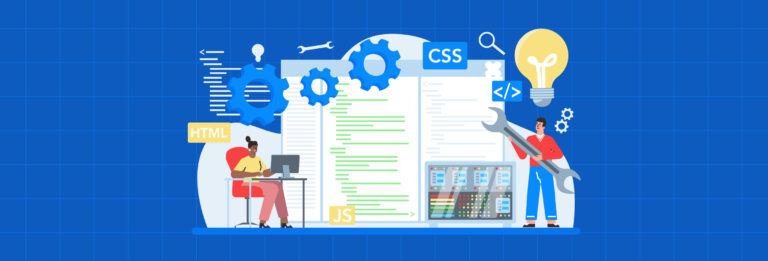History is about to repeat itself in the HR industry. A boom in productivity and business growth, powered by technologies like AI, is on the cards — a similar scenario to the initial days of the 2010s, the decade when an HR tech stack first came into existence. Fuelled by the intranet and digital tools, it was in this era that HR workflows transformed from paper-pushing doldrums to a holistic people management role. Early adopters of these new digital systems — Pfizer, Dell, Hewlett-Packard, and Cisco — still reap the benefits today.
Today, the HR world is at a similar watershed moment. HR technology in the wake of the COVID-19 pandemic has transformed to meet the demands of the time. Companies that assimilate the latest HR tools into their technological ecosystem stand to gain big. Better retention rates, greater job satisfaction, lower turnaround times of administrative processes, and increased window for high-impact activities — are a few of the many advantages of revamping existing HR stacks with emerging technologies.
In this blog, we explore:
- How to approach a project for upgrading the existing ecosystem for HR digital tools
- Decision-making strategies for effective implementation, and
- Tips to narrow down on a transformation partner.
But before we dive into details, it is important to understand what comprises an HR tech stack.
What is an HR tech stack?
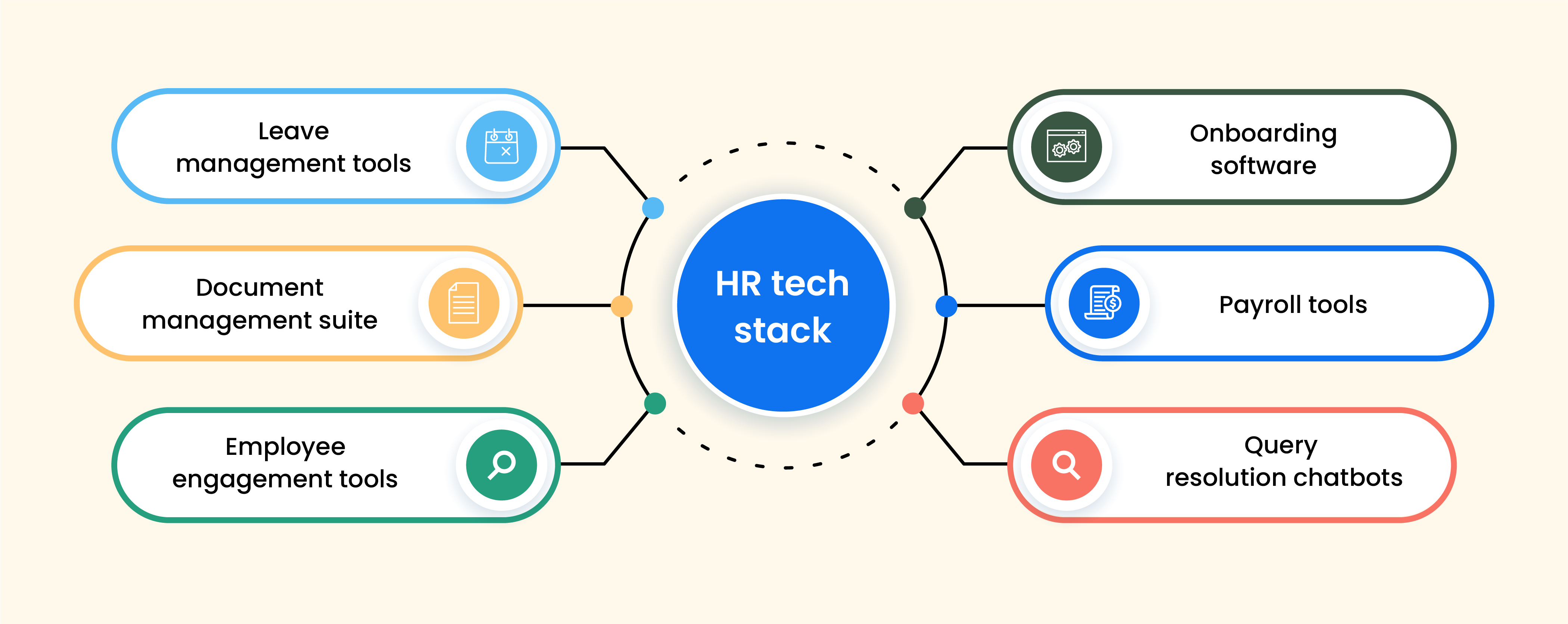
HR technology stack is an umbrella term for digital solutions that assist in the execution of HR operations and delivering HR services. Payroll software, document management tools, onboarding assistance suites, and AI-powered employee engagement solutions are some of the most common components of an HR tech stack. These tools are meant to serve the following functions:
- Handle legacy tasks, such as payroll and benefits calculations, to free up HR professionals for high-impact projects.
- Reduce turnaround time for HR processes and administrative functions, allowing HRs to have meaningful interactions with the employees
- Help track the pulse of the organization and execute people-focussed initiatives with success
If built smartly, a robust HR tech stack can empower small HR teams to deliver monumental impact. Together, the tools can enable HRs to switch between their various avatars — recruiter, empathetic colleague, human innovation driver, compliance stalwarts — effortlessly. It also helps them minimize errors, reduce delays, and contribute better to company goals.
How to execute an HR technology solution implementation project
While adopting an HR tech stack is always a good idea, faulty implementation is a recipe for disaster. Throwing different HR digital tools together without knowing their symbiotic relationship will always lead to a low return on investment (ROI). There needs to be a game plan that charts a roadmap from problem analysis to project execution, with a clear understanding of achievable Objectives and Key Results (OKRs). To do that, it is always best to TRACE.
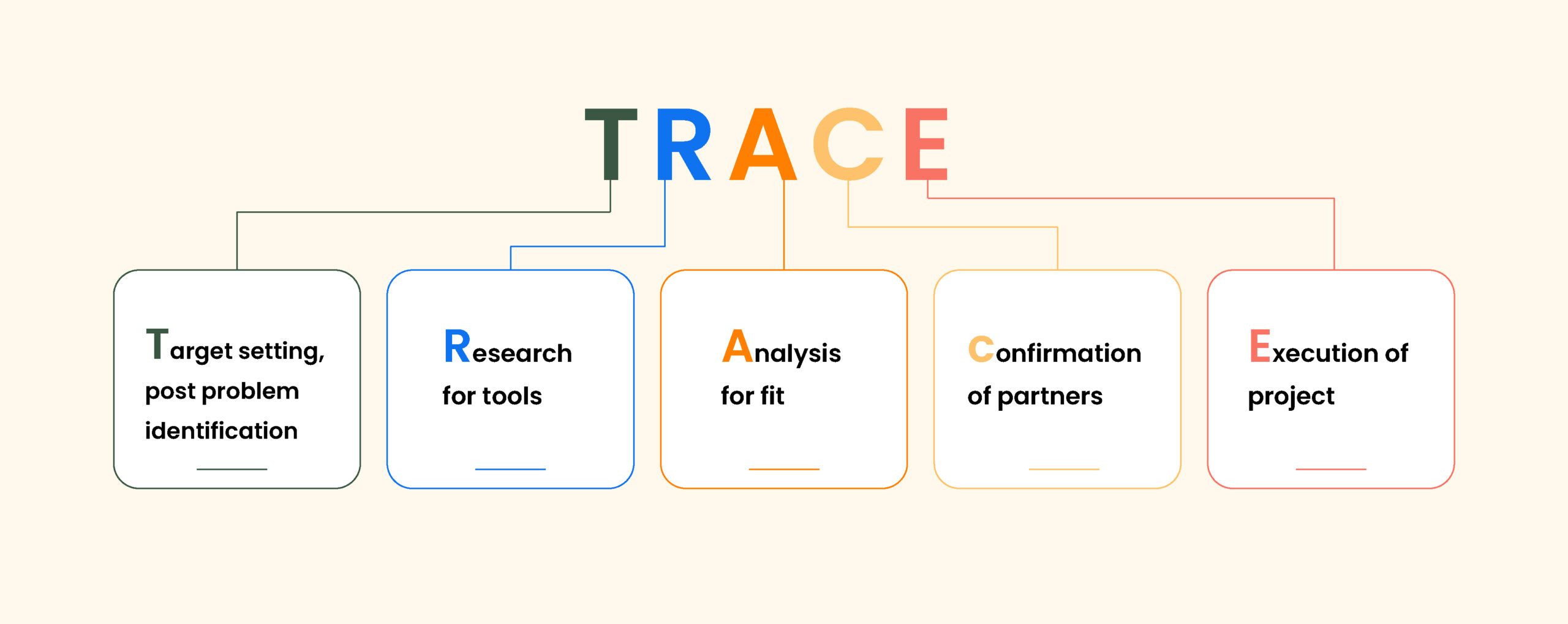
🎯 Target setting, post problem identification
An HR tech stack should always solve an existing or a future problem. Therefore, it is crucial that HR managers pin down priority issues and set clear targets on how to weed them out. For example, KEC international had a pressing need to automate and streamline the resolution of routine queries. It had a 9,000-strong workforce that handled different verticals around the world.
KEC could have simply evaluated a set of HR partners, finalized a query resolution tool, and implemented it. However, they did not do so. KEC’s HR team and Leena AI dived deep into how employees obtained information about the company and HR policies. A significant effort was made to understand gaps in the process. Post analysis, Electra — the Leena AI’s virtual assistant equipped with Natural Language Processing (NLP), was deployed. It reduced the turnaround time of query resolution by 80% and saved 5,000+ HR hours in just one quarter.
The target was to reduce employee query resolution time and save time for HRs to focus on key projects. KEC achieved these targets successfully, thanks to proper problem identification and target setting.
Takeaway: Companies looking to adopt a new ecosystem for their HR digital tools should identify what problems they are facing and set targets for solving them. Organizations can also set priority OKRs in this stage.
🔍 Research for tools
After problem identification and target setting, the next step is to narrow down a set of tools that can help achieve the targets. It is always a good idea to categorize the tools based on the functions they will perform. The following is a list of areas and functions common tools fall under.
- Hiring and recruitment. Eg: TalentLyft and Breezy
- Payroll and benefits management. Eg: ADP and Rippling
- Employee onboarding. Eg: Notion and Guru
- Training and development. Eg: SAP Litmos and TalentCards
- Employee engagement: Leena AI
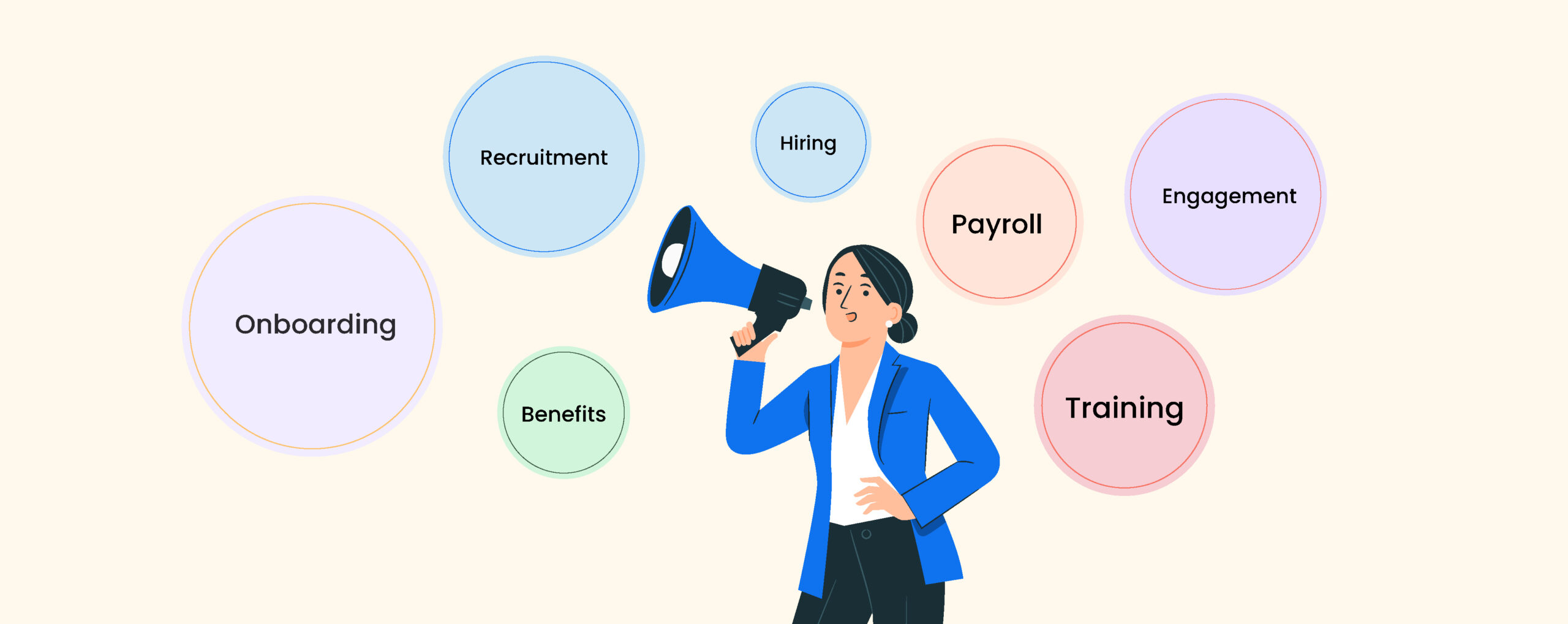
HRs can match these tools and their capabilities with the targets set to get a workable combination. Apart from individual tools, HRs can opt for partners that offer a suite of services of homegrown solutions or seamless integration with existing software. Leena AI is a great example of an HR solution that provides a suite of services and integrations.
Takeaway: Prefer tools and solution partners that provide seamless integration among a suite of services, for key focus areas.
📊 Analysis for fit
Once a set of tools for the HR tech stack is compiled, the next step is to conduct a trial run with the tools. Most HR digital tools come with a demo or trial run for the product, so there should be little hiccups in getting some key performance metrics. During a fit analysis, use the following questions to narrow down the effectiveness of the tool:
❓Does the tool align with the company goals?
❓Is the tool plug and play, or will it have an installation delay?
❓Can the tool integrate with existing workflows?
❓Are data security standards met?
❓Does the tool meet the requirements of the HR team?
❓Will scalability be an issue in the long run?
With the answers to these questions, place the tools now on the chart below:
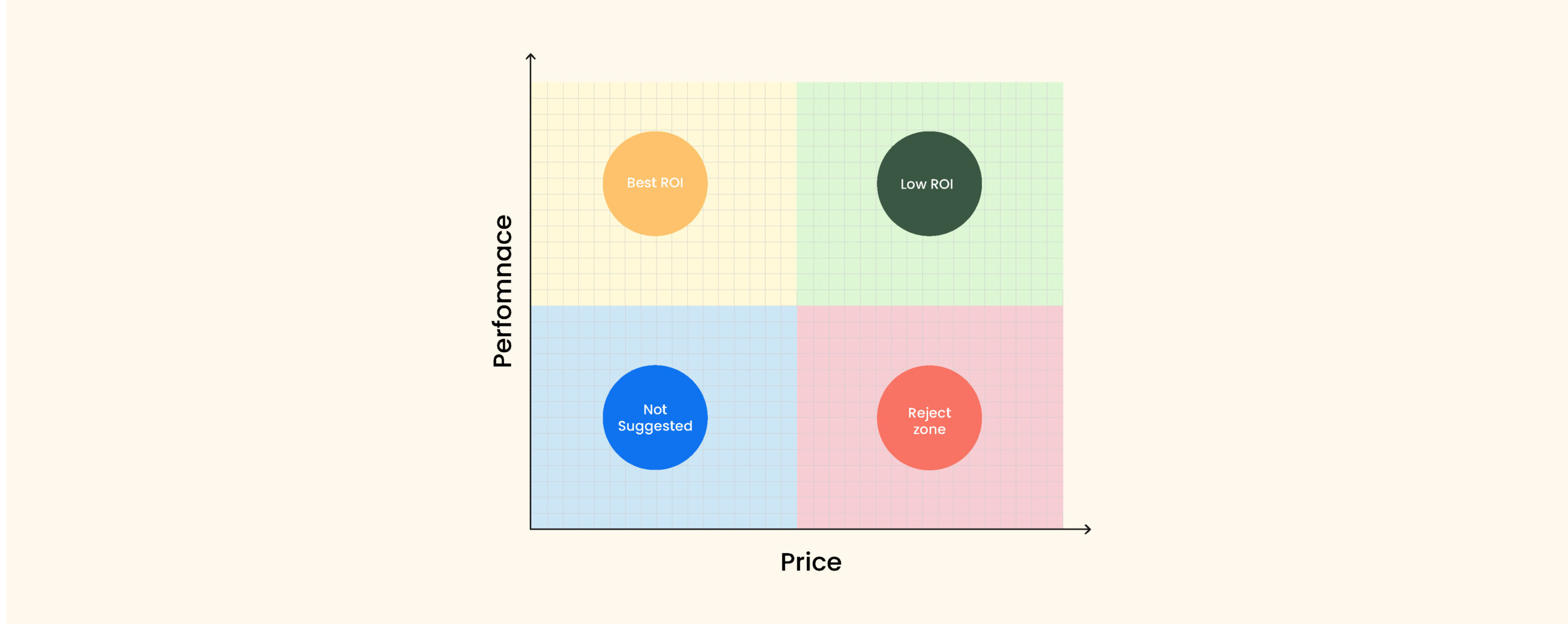
HRs should always go for a tool that falls within the best ROI zone or the yellow region. The green zone can also be considered, but only if the team is ready to take a heavy investment load on the HR stack implementation. For the blue zone, tools for short-term projects can be considered. The red zone should always be a no go zone for HRs.
Takeaway: Choose tools that provide the best ROI in the long run over cost benefits at adoption.
✅ Confirmation of partners
After narrowing down on a set of tools that give good ROI projections, it is time to finalize project partners aka HR tech vendors. This is a key step as the investments are going to be heavy and taking a U-turn will lead to resource wastage. The best choice is going to be the HR partner that ticks the following checkboxes*:
☑️ Familiarity with emerging technologies like artificial intelligence and machine learning
☑️ Prior experience with project implementation in a similar industry
☑️ Proven track record of successful initiatives
☑️ Focus on design and user experience
☑️ Fast go-to-market capabilities
☑️ 24/7 support in a language of preference
*Other criteria of judgment may be added based on organizational requirements.
🏁 Execution of project
Once you finalize the HR tech vendor, the last step is project implementation. If multiple projects are in the pipeline, we suggest using the Priority Matrix to decide which project to go ahead with.
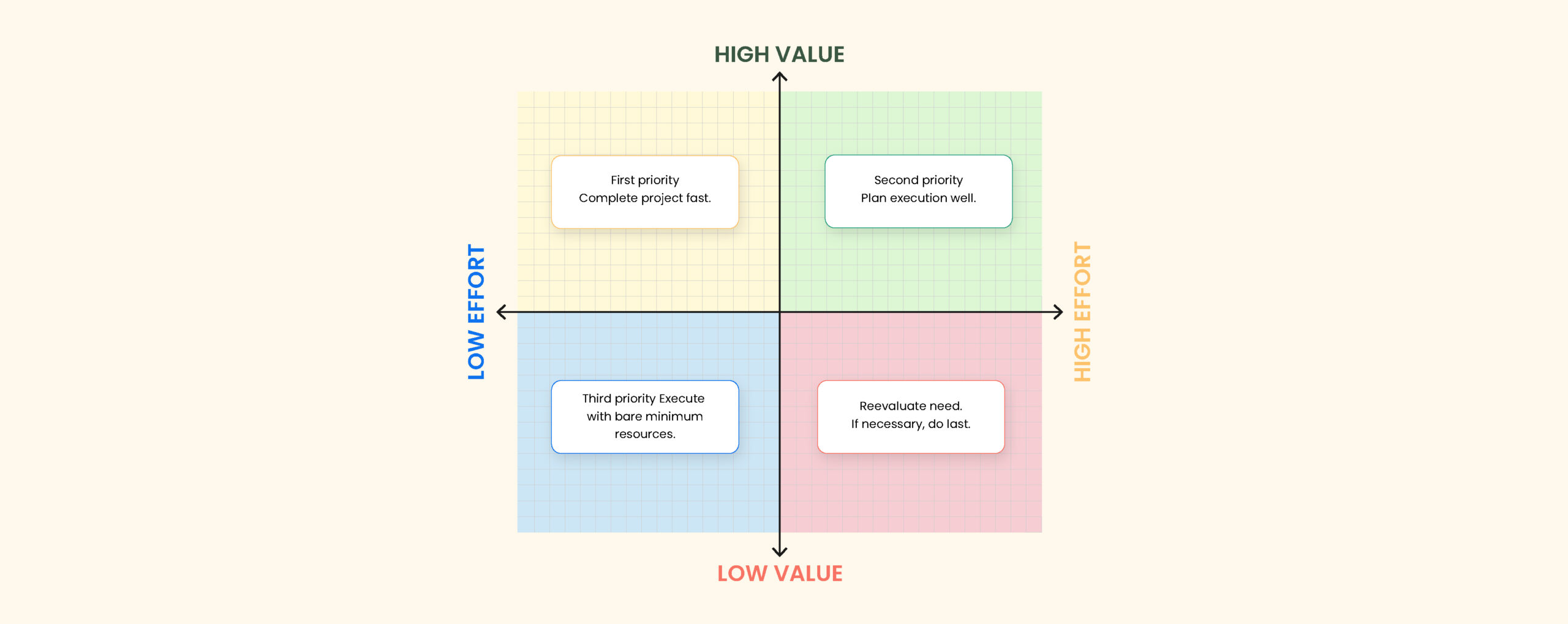
Plan the execution for groups of projects that can go in tandem with one another. For example, the high-priority projects and those that can be completed fast can be paired, as the latter requires a lesser investment of resources.
But whether the choice is a ‘one-stop-shop’ platform or a ‘best-of-breed’ approach, you need to be vigilant during the implementation journey. Close collaboration with the transformation partner is the X-factor for success. From timeline adherence to progress updates, concerned stakeholders should keep themselves briefed on all the latest developments.
Takeaway: Choose execution timelines based on the placement of the projects on the priority matrix.
Bringing it all together
A powerful HR tech stack powered by artificial intelligence is going to be Excaliburs for the companies that get their equation right. The race is already on. According to an Oracle survey, having strong HR tech stacks is a top priority for 56% of organizations. The same survey also revealed that about 63% of leaders felt that their HR tech ecosystem supports key business goals and strategies extremely well.
What does this mean for growth-hungry organizations? It is a clear indication that top spots in industries are reserved for those that get their HR tech stack right. What Pfizer, Dell, Hewlett-Packard, and Cisco did in the 2010s, companies have the chance to emulate, or even exceed their success, in the new paradigm. The future belongs to HRs empowered by the right tools.




